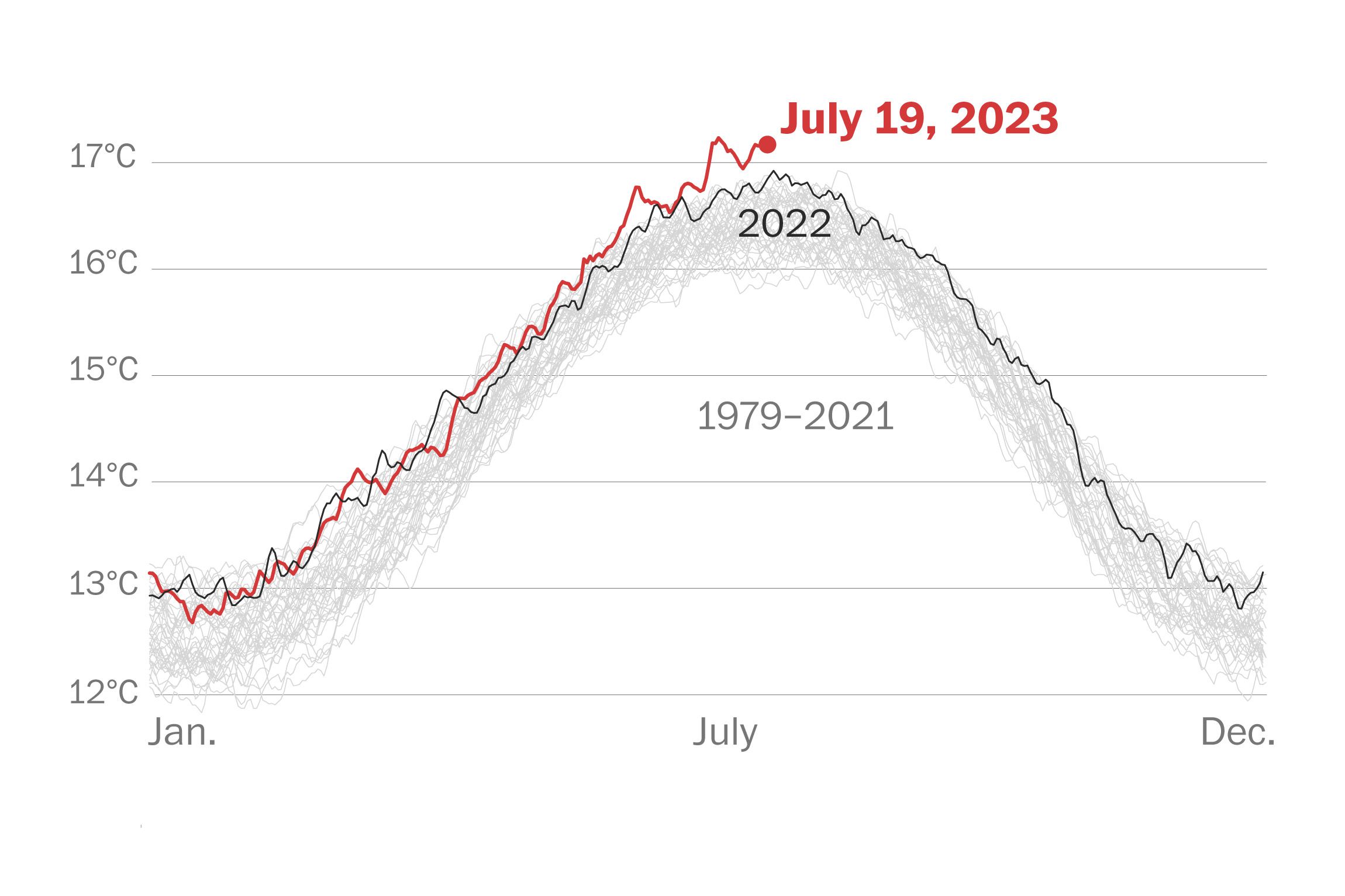In July 2023, our planet experienced an unprecedented rise in temperatures, marking it as the hottest month ever recorded. This alarming trend underscores the urgency of addressing global climate change and its root cause, greenhouse gas emissions. Let’s delve into the key highlights and findings of this extraordinary month.
1. Global Temperature Soars

The global average temperature for July 2023 shattered previous records, soaring 0.72°C above the July average of 1991-2020. This temperature increase was a significant 0.33°C higher than the previous hottest month, July 2019. Furthermore, July 2023 was estimated to have been approximately 1.5°C warmer than the historical average from 1850-1900. These figures emphasize the rapid escalation of global temperatures.
2. Northern Hemisphere Heatwaves
The Northern Hemisphere bore the brunt of extreme heat, with widespread heatwaves affecting various regions. Southern Europe, in particular, experienced scorching temperatures. The occurrence of such heatwaves indicates the concerning intensification of climate anomalies in recent years.
3. South America and Antarctica Affected
Across South America, numerous countries witnessed well-above-average temperatures. Meanwhile, significant warming was observed around a substantial portion of Antarctica, indicating the broad-reaching impact of global temperature trends.
4. Disturbing Sea Surface Temperature Rise
Sea surface temperatures also surged to alarming levels, building upon a period of high temperatures since April 2023. In July, global average sea surface temperatures reached a record high, surpassing the 1991-2020 average by 0.51°C. Distinct regions, including the North Atlantic, experienced temperature spikes of 1.05°C above the norm. Marine heatwaves were observed in the Caribbean basin, the Mediterranean Sea, and the seas surrounding Greenland.
5. 2023’s Warming Trend
The year 2023 emerged as the third warmest year to date, with an overall temperature elevation of 0.43°C compared to the recent average. July’s global temperature was an astounding 1.5°C above preindustrial levels. This dramatic increase underscores the need for immediate and substantial efforts to curtail greenhouse gas emissions, which remain the primary driver of these unprecedented climate records.
6. Sea Ice Retreat
The decline of sea ice continued in July 2023, particularly in Antarctica, where the sea ice extent reached a remarkable 15% below average. This unsettling trend has persisted for several months, painting a dire picture of the ongoing impacts of climate change. While Arctic sea ice extent remained slightly below average, it remained well above the record low observed in July 2020.
7. Hydrological Changes
July 2023 brought varying hydrological conditions across the globe. Northern Europe and regions from the Black Sea to northwestern Russia experienced above-average rainfall. Conversely, the Mediterranean basin faced drier-than-average conditions, with Italy and southeastern Europe witnessing notable anomalies.
Outside of Europe, areas such as northeastern North America, Afghanistan, Pakistan, northeastern China, northern and eastern Australia, and Chile received above-average rainfall. On the other hand, regions such as Mexico, the southwestern United States, central and southeastern Asia, southwestern Australia, and parts of southern Brazil and Paraguay experienced below-average precipitation.
Find More International News Here



 Paris Olympics 2024 Medal Tally, India M...
Paris Olympics 2024 Medal Tally, India M...
 Which District of Madhya Pradesh is Famo...
Which District of Madhya Pradesh is Famo...
 EC Signs Electoral Cooperation Pact with...
EC Signs Electoral Cooperation Pact with...

